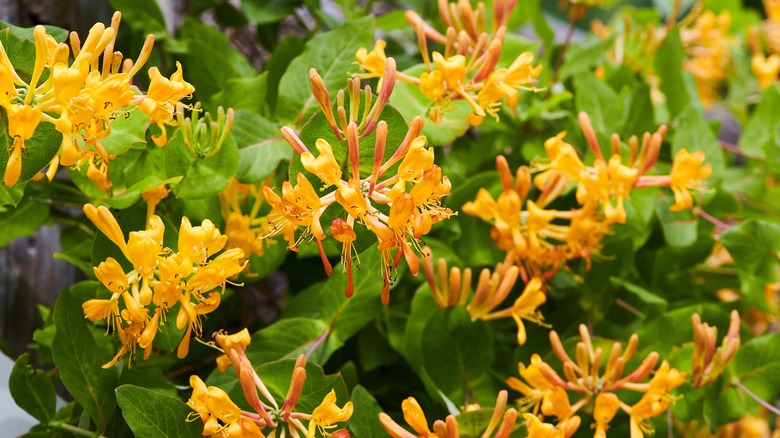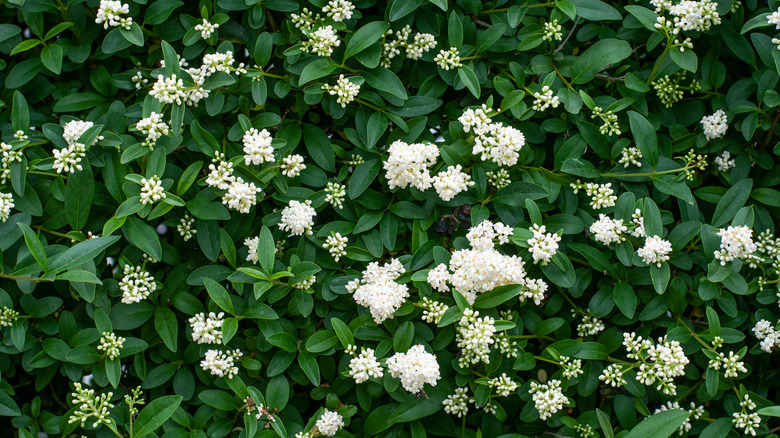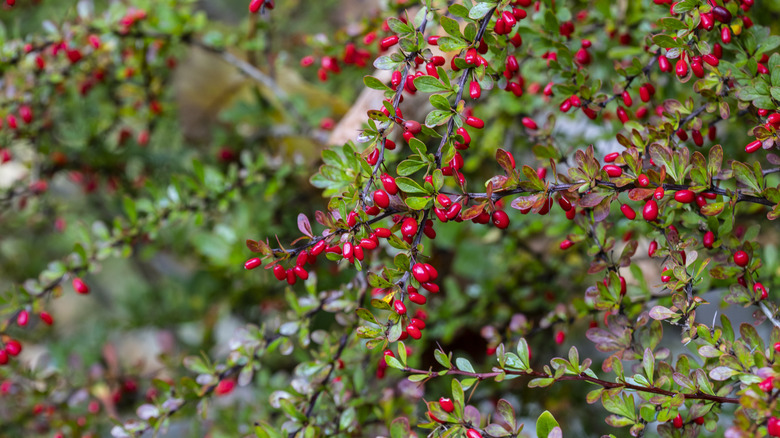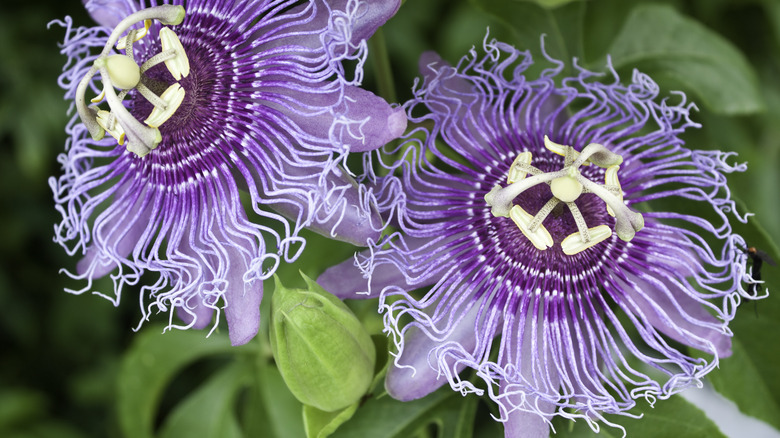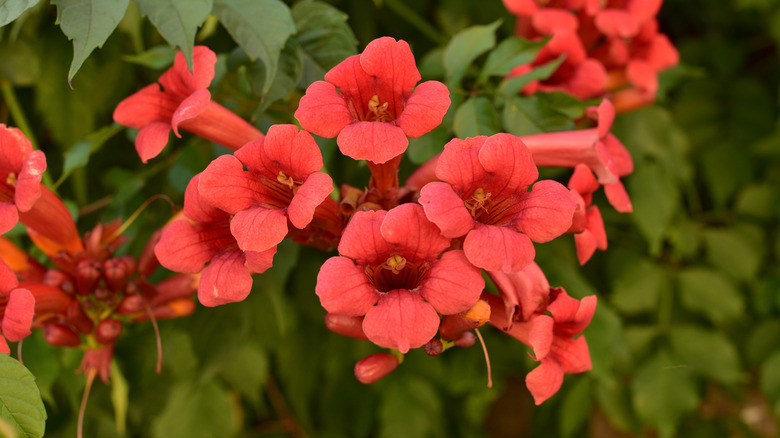What Is The Difference Between An Invasive Plant And Aggressive Growers?
The terms "invasive" and "aggressive" are thrown around pretty loosely among gardeners. While chatting about lawns, you might hear, "You better get rid of those wild violets. They're invasive!" or alternatively, "This Japanese honeysuckle smells so good, but it's starting to grow more aggressively than I expected." Neither of these statements is correct. There is a specific definition for invasive, and anything else that tends to grow quickly could be considered an aggressive grower. While all invasives are aggressive, not all aggressive plants are invasive.
Before we move forward, let's define aggressive within the context of gardening and landscaping. Aggressive plants are not going to punch you and steal your wine — now, that would be terrifying! You might hear about these plants "taking over" or "popping up" all over the place. However they may be described, some might consider them unbearably annoying, while others seek them out for their outdoor space. Now that we have an idea of what these terms mean, let's start with more information about invasive species.
About invasive species
The plants on the invasive species list vary by location. What is considered invasive in California may not be a problem in Maine. Environmental conditions play a big part in the ability of a plant to overtake native species, but there are two conditions a plant must meet to be considered invasive. First, no native species are considered invasive. Each plant on every invasive species list is non-native to the region in which it is a problem. Second, the existence of these plants must be capable of causing harm in some way, including environmental and economic. They may even cause harm to humans.
Invasive plant species include trees, bushes, vines, and grasses. Some of the most common in the United States include the tree of heaven (Ailanthus altissima), which, if you could ask mother nature, is less than heavenly. English ivy (Hedera helix L.) is still a popular landscape plant despite being on the invasive species list. Chinese privet (Ligustrum sinense) is commonly grown for privacy in the Southeast. However, because the plants spread so quickly, some states, counties, and municipalities have made it illegal to sell these cultivars, but this process is difficult to control.
Environmental impacts of invasive plants
It may seem like no big deal to plant one Japanese barberry (Berberis thunbergii) in your yard. It's pretty and easy to grow. And therein lies the problem — it's too easy to grow. Invasive species cause problems for the environment for several reasons. Japanese barberry, Japanese honeysuckle, and Chinese privet, along with many others, produce an excessive number of seeds that are spread by birds, wind, or even the fur of animals. When a bird eats a berry from that bush in your yard and deposits it somewhere in the woods, that seed becomes a bush, which produces more seeds, and the cycle continues.
As these invasive species flourish, they take over areas of land where native plants once thrived. The animal, bird, and reptile species that depended on those native plants are forced to migrate, or they simply do not survive. We know this is a real Debbie Downer situation, but when we know better, we do better. So, skip that Japanese barberry and opt for a native variety, or instead of planting Japanese honeysuckle, plant native coral honeysuckle. In a world full of native plants, there is always an alternative to planting an invasive species.
About aggressive growers
When we are talking about plants, aggressive growers often include native plants. Those who love perfect lawns know the frustration of an overgrowth of dandelions or wild violets. Still, if you can bear to let your yard go a little more au naturel, these prolific plants offer some of the earliest food for bees and migrating butterflies.
There are also some native vines that are a favorite of bees, butterflies, and hummingbirds that are incorrectly labeled as "invasive." Passion flower (Passiflora incarnata), also known as Maypop or passion vine, offers a stunning bloom that is a favorite of big bumblebees. This plant is also the host plant for four types of butterflies in the Southeast. Even with its many benefits and its vital role in the survival of native insects, it is sometimes considered a pesky plant. However, although people find it difficult to control, the difference between this plant and the Japanese honeysuckle is that it supports the ecosystem rather than destroys it.
Plants that straddle the fence
Sometimes the line gets blurred between what is truly invasive and what is aggressive. This often happens with biologically related plants that come from different ecosystems. It gets even more confusing when common names are used for plants that produce very different environmental impacts. One example of using the same name for different plants is wisteria. If you go to a garden center and ask for this option, you may be taken to the showy and exceptionally fragrant Japanese wisteria (Wisteria floribunda). This cultivar is invasive as far north as New York and west through Texas. A similar native option is the American wisteria (Wisteria frutescens). It might not be as bold as its invasive cousin, but it is still a stunning plant with aromatic blooms on vines that can reach up to 40 feet long.
Trumpet creeper (Campsis radicans), also known as trumpet vine, is listed in The USDA Plant Guide as both invasive and native, which seemingly goes against the agency's own standards. This is possible because this voracious vine is invasive in some areas of the United States, but not in others. It may feel overwhelming to make sure you avoid planting invasive species in your landscape, but you can learn what is considered invasive in your region by visiting the USDA National Invasive Species Information Center to find the most environmentally friendly choices.
